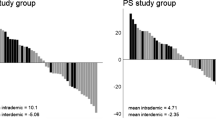Abstract
We investigated how adaptation to salinity and temperature acts as reproductive barriers in three sympatric species from the Brachionus plicatilis species complex. These species co-occur in a salt marsh in Spain, and a previous electrophoretic study of variation revealed no hybrids between them. A factorial experiment was designed to test for differences in population growth rates and patterns of bisexual reproduction. The design combined representative strains from each species in different salinity and temperature conditions, representing the range over which these rotifers are found in their natural environment. We found differences in the growth response of the three species to both factors and in the pattern of bisexual reproduction. These differences help to explain patterns of succession observed in the field. We conclude that these ecological factors, together with mate recognition systems, account for the absence of gene flow in these sympatric species.
Similar content being viewed by others
Author information
Authors and Affiliations
Additional information
Received: 22 July 1996 / Accepted: 14 March 1997
Rights and permissions
About this article
Cite this article
Gómez, A., Carmona, M. & Serra, M. Ecological factors affecting gene flow in the Brachionus plicatilis complex (Rotifera). Oecologia 111, 350–356 (1997). https://doi.org/10.1007/s004420050245
Issue Date:
DOI: https://doi.org/10.1007/s004420050245




